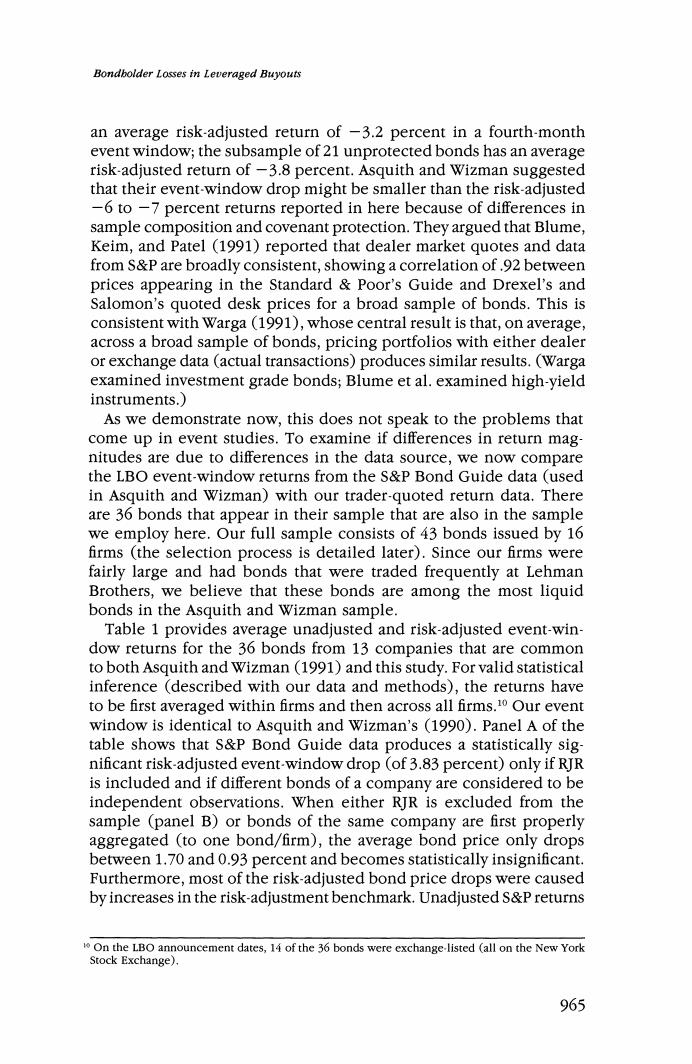正在加载图片...

Bondbolder Losses in Leveraged Buyouts an average risk-adjusted return of -3.2 percent in a fourth-month event window;the subsample of 21 unprotected bonds has an average risk-adjusted return of-3.8 percent.Asquith and Wizman suggested that their event-window drop might be smaller than the risk-adjusted -6 to-7 percent returns reported in here because of differences in sample composition and covenant protection.They argued that Blume, Keim,and Patel (1991)reported that dealer market quotes and data from S&P are broadly consistent,showing a correlation of.92 between prices appearing in the Standard Poor's Guide and Drexel's and Salomon's quoted desk prices for a broad sample of bonds.This is consistent with Warga(1991),whose central result is that,on average, across a broad sample of bonds,pricing portfolios with either dealer or exchange data (actual transactions)produces similar results.(Warga examined investment grade bonds;Blume et al.examined high-yield instruments.) As we demonstrate now,this does not speak to the problems that come up in event studies.To examine if differences in return mag- nitudes are due to differences in the data source,we now compare the LBO event-window returns from the S&P Bond Guide data (used in Asquith and Wizman)with our trader-quoted return data.There are 36 bonds that appear in their sample that are also in the sample we employ here.Our full sample consists of 43 bonds issued by 16 firms (the selection process is detailed later).Since our firms were fairly large and had bonds that were traded frequently at Lehman Brothers,we believe that these bonds are among the most liquid bonds in the Asquith and Wizman sample. Table 1 provides average unadjusted and risk-adjusted event-win- dow returns for the 36 bonds from 13 companies that are common to both Asquith and Wizman (1991)and this study.For valid statistical inference (described with our data and methods),the returns have to be first averaged within firms and then across all firms.10 Our event window is identical to Asquith and Wizman's (1990).Panel A of the table shows that S&P Bond Guide data produces a statistically sig- nificant risk-adjusted event-window drop (of 3.83 percent)only if RJR is included and if different bonds of a company are considered to be independent observations.When either RJR is excluded from the sample (panel B)or bonds of the same company are first properly aggregated (to one bond/firm),the average bond price only drops between 1.70 and 0.93 percent and becomes statistically insignificant. Furthermore,most of the risk-adjusted bond price drops were caused by increases in the risk-adjustment benchmark.Unadjusted S&P returns On the LBO announcement dates,14 of the 36 bonds were exchange-listed (all on the New York Stock Exchange). 965